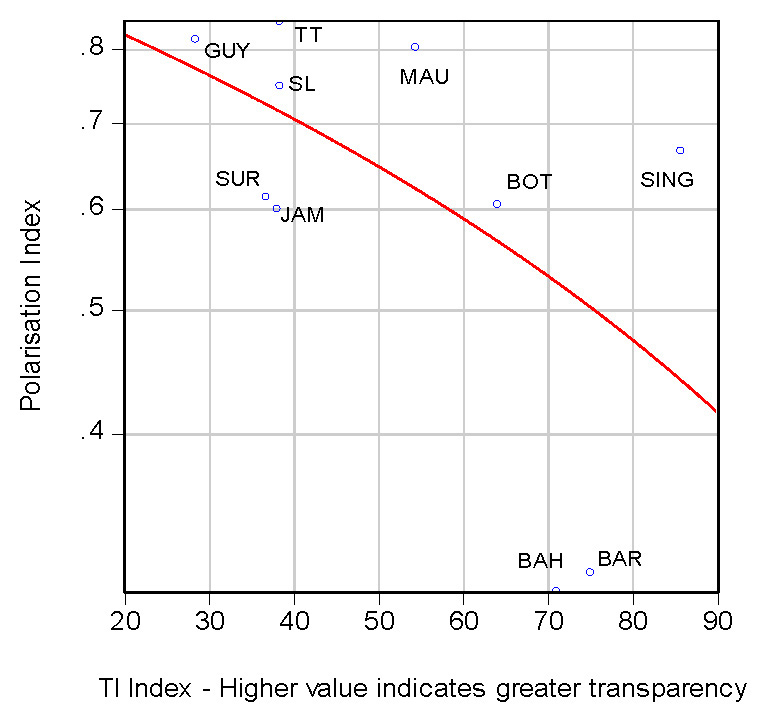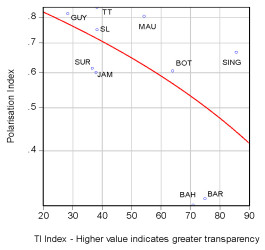 The forensic audits to date, as reported in the media, have found little evidence of widespread government theft. Instead a lot was uncovered with respect to ethical lapses and incompetence such as inappropriate filing, missing records and lack of minutes of meetings, making it difficult to judge the wisdom behind policy decisions. Of course, actual off-the-book corruption or kick-backs flourish in such a lackadaisical environment of record keeping. But how does one go about proving former government officials accepted gifts off the books? The circumstantial evidence is highly suggestive and well-reported in the reputable parts of the private media.
The forensic audits to date, as reported in the media, have found little evidence of widespread government theft. Instead a lot was uncovered with respect to ethical lapses and incompetence such as inappropriate filing, missing records and lack of minutes of meetings, making it difficult to judge the wisdom behind policy decisions. Of course, actual off-the-book corruption or kick-backs flourish in such a lackadaisical environment of record keeping. But how does one go about proving former government officials accepted gifts off the books? The circumstantial evidence is highly suggestive and well-reported in the reputable parts of the private media.
It is not surprising that there is little showing up in the form of a convincing pattern of theft by members of the previous government. The previous ruling elites were quite open with the way it went about rewarding close friends and family members. The unfair nature of the distribution of media rights and radio waves were meant to control the flow of information in its favour. These were heavy-handed policies meant for redistributing resources to a few. It was nepotism and bad governance in the open.
The nepotism and heavy-handed governance presented major credibility problems that nurtured excessive speculation of widespread stealing in some media outlets. Last year one reporter speculated that Professor Thomas’ estimates of capital flight and underground economy can be labelled as government theft. This is far from correct since capital flight occurs when people with investment funds have no confidence in government policy, so political uncertainty hastens their exit. It is important to define corruption properly so that it can be prosecuted.
Accountability, credibility and transparency are intertwined. The PPP had little appetite for accountable governance and as a result the public and observers viewed its policies as having the propensity to corrupt. One cannot blame the public since they’re viewing the government’s performance through what economists call the time inconsistency problem, the incentive of public officials to pursue self-serving policies instead of those that benefit the entire society. Analysts and observers start out from the position that an elected official will renege on promises made and will be self-serving once in power.
Therefore, the onus is on government to provide credible signals of transparency that promote accountability to convince the public and observers of its good intentions. In other words, government has to make a credible commitment to be fair and provide good governance. There is also need for a credible commitment in policy (policy clarity) so that private investors can properly value investment decisions. In the case of Guyana, credible commitment to be fair and policy clarity will have to go hand in hand for the public to believe the government is serious about social cohesion. In the absence of credible signals and transparency almost every action will be interpreted as corrupt.
For example, the public could not understand the role of NICIL when its actions were most lacking in transparency. It now obvious the previous government wanted to use the people’s tax monies to build a hotel. They simply lied about the existence of a private investor who never showed up. The Skeldon sugar factory and the specialty hospital all suffered from serious credibility problems, in spite of being crucially important projects for economic well-being. The majority of Guyanese who eventually voted against the PPP in 2011 and 2015 could not fathom good intentions behind these much-needed projects.
The present APNU+AFC administration has now entered the phase of wobbly credibility. It will have to shape up if it is to improve its electoral prospects for 2020 even though the alternative is still not credible. It has not yet reached the stage where every action is interpreted as having a corrupt intention, but it is fast approaching that stage. Several decisions would have placed it in its current state: the lack of policy clarity, the size of government, employment of advisors, furtive use of contract workers (its own patronage system) with pay greater than those already doing the work, and the self-serving 50% salary increase.
Accountability is also necessary for the reason of social cohesion. It will be difficult to defuse the charge of marginalization in an environment of low transparency. Perception of corruption and clientelistic patronage will also breed resentments that make cohesion more difficult to achieve. Records have to be kept of those who received land, gold mining rights and other state-based opportunities. These should be recorded and declared online as an example of credible commitment to be fair. The same has to be done for the distribution of house lots and mortgage loans. The PPP, for example, was busy having its unintelligent online goons attacking critics instead of keeping records of distribution of gold dredging rights, house lots, new homes built and mortgage distribution under its watch. Furthermore, any President who sits back and allows skewed distribution of the people’s resources is up to no good.
Why is transparency and accountability important, particularly in a polarized society? I present a chart comparing Guyana with nine peer economies: Barbados, The Bahamas, Botswana, Jamaica, Mauritius, Singapore, Sri Lanka, Suriname and Trinidad and Tobago. Economists have developed a measure of ethnic, religious or social polarization. Bi-communal societies like Guyana would tend to have a higher polarization index, whereby values closer to 1 shows higher polarization and values closer to 0 show more cohesion. The polarization values are on the vertical axis. On the horizontal axis are the values from the Transparency International corruption perception index (CPI). The closer the CPI index is to 100 indicates greater transparency or low corruption perception.
The simple scatter plot is more suggestive than causative. It suggests that countries with low transparency tend to be more polarized. This is shown by the countries in the upper left – Guyana, Trinidad and Tobago and Sri Lanka. On the other hand, The Bahamas and Barbados are in the lower right indicating higher transparency and low polarization. Singapore (SING) is in an interesting position. It has a mid-level to fairly high polarization but high transparency. I believe this position has to do with its better management of ethnic divisions, its favourable geography, and its unorthodox and heterodox economic policies going back to the mid-1960s.
Figure 1: Corruption perception and ethnic polarisation
Comments: tkhemraj@ncf.edu







